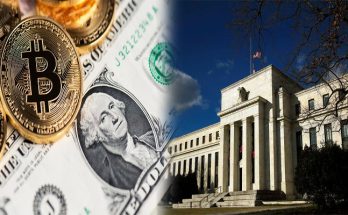Interest rate policies play a crucial role in shaping lending activity, especially in emerging economies. Central banks and policymakers utilize interest rates as a tool to manage inflation, stimulate economic growth, and maintain financial stability. By adjusting interest rates, they can influence borrowing costs, which in turn affects lending activity. In this article, we will explore the impact of interest rate policies on lending activity in emerging economies.
The Relationship Between Interest Rates and Lending Activity
Interest rates directly influence the cost of borrowing for individuals, businesses, and governments. When interest rates are low, borrowing becomes more affordable, stimulating lending activity. Lower interest rates incentivize individuals and businesses to take on debt to finance investments, expand operations, or purchase assets. This increased borrowing and lending activity contribute to economic growth and expansion.
Conversely, when interest rates are high, borrowing becomes more expensive, discouraging individuals and businesses from taking on debt. Higher interest rates can lead to reduced lending activity as borrowing costs become prohibitive. This can dampen economic activity, hinder investment, and potentially slow down overall economic growth.
Impact on Investment and Business Expansion
In emerging economies, where access to capital is often a challenge, interest rate policies significantly impact investment decisions and business expansion. Lower interest rates encourage entrepreneurship and incentivize businesses to invest in new projects, research, and development. This promotes job creation, innovation, and economic growth. When borrowing costs are low, businesses can more easily obtain financing for expansions, leading to increased investment and expansion opportunities.
Conversely, higher interest rates can restrict access to credit and hinder investment and business expansion. When borrowing costs become prohibitively expensive, businesses may be discouraged from investing in new projects or expanding their operations. This can have a negative impact on employment opportunities and overall economic development.
Effect on Consumer Spending and Debt Levels
Interest rate policies also influence consumer behavior and borrowing patterns. In economies with low-interest rates, borrowing costs for consumers are reduced, making it more affordable to purchase homes, cars, and other assets. This can stimulate consumer spending, leading to increased economic activity and growth.
On the other hand, higher interest rates can curtail consumer spending. When borrowing costs rise, individuals may reduce their borrowing or postpone major purchases. This reduction in consumer spending can have a negative ripple effect on businesses, leading to a slowdown in economic activity.
Additionally, interest rate policies can influence household debt levels. Low-interest rates make it easier for households to borrow, potentially leading to higher levels of debt. This can have long-term consequences, as high levels of household debt can strain household finances and negatively impact economic stability. Policymakers must carefully consider the potential risks associated with excessive levels of borrowing.
Responding to Economic Conditions
Central banks and policymakers continuously monitor economic conditions to determine the appropriate interest rate policies. In times of economic slowdowns or recessions, central banks may lower interest rates to stimulate borrowing, investment, and overall economic activity. Alternatively, during periods of inflation or economic overheating, central banks may raise interest rates to cool down the economy, curb inflation, and prevent financial imbalances.
However, it is essential to strike a balance when implementing interest rate policies. While low-interest rates can stimulate borrowing and economic growth, they must be carefully managed to prevent excessive borrowing, asset price bubbles, or financial instability. Similarly, while high-interest rates may help control inflation, they should not overly restrict lending activity and hinder economic growth.
The impact of interest rate policies on lending activity in emerging economies is significant. By adjusting interest rates, policymakers can influence borrowing costs, which in turn affects investment decisions, business expansion, consumer spending, and household debt levels. Central banks and policymakers must carefully consider the prevailing economic conditions and strike a balance in setting interest rates to support sustainable economic growth, financial stability, and the overall well-being of the economy.





